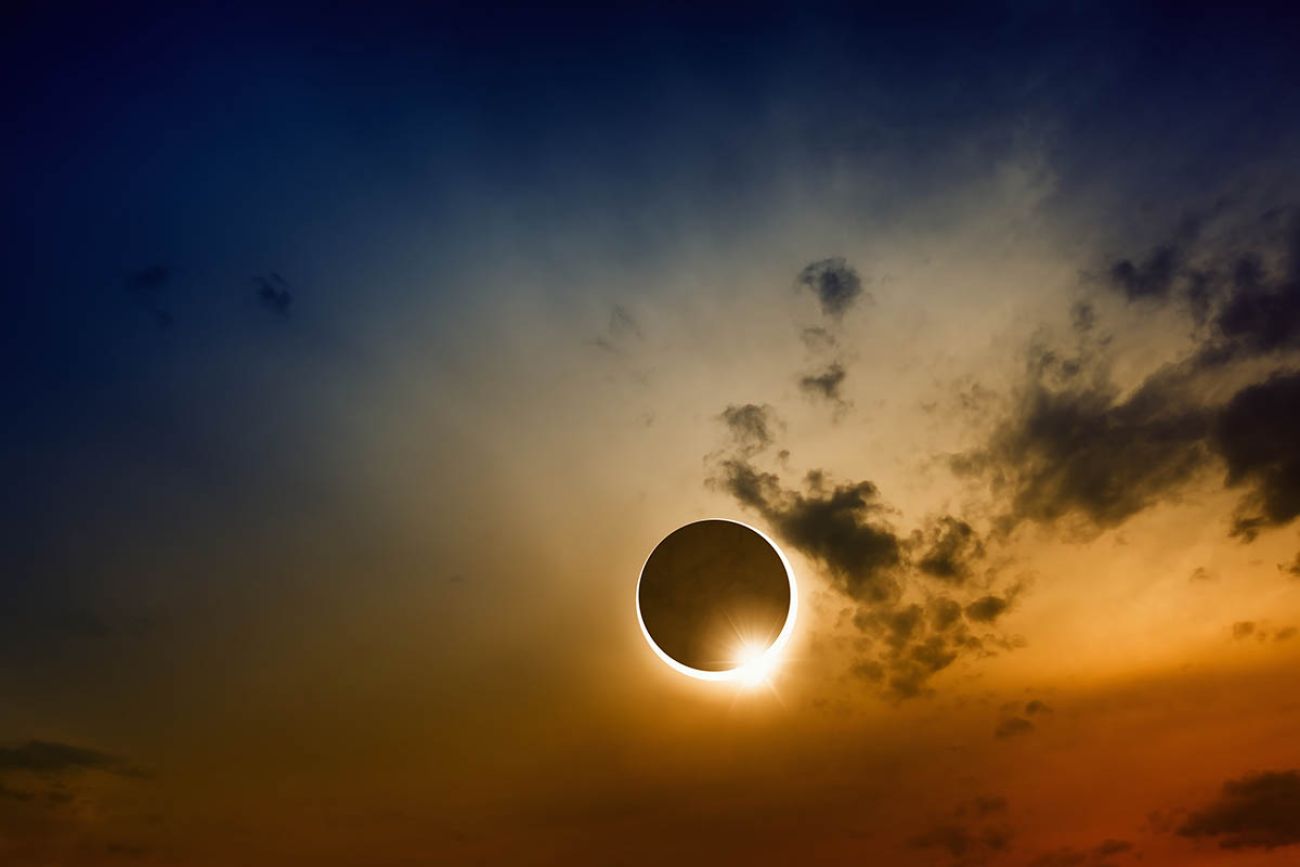Solar eclipse 2024: What will Michigan see? How to get glasses, other answers

Luna Pier in southeast Michigan falls just on the edge of the line of totality for the April 8 eclipse. Most of the state may not experience total darkness, but special eclipse glasses should still be worn. Photo credit: Shutterstock.
by Janelle D. James (Bridge Michigan)
The good news: Excitement is building for the first visible solar eclipse in Michigan since 1954.
The bad news: Most of the state doesn’t fall in the path of the April 8 eclipse, with just a slice of Monroe County in southeast Michigan getting the full effect.
So many are making plans to travel south to Ohio or Indiana for a better view, here is everything you need to know about the eclipse.
Best views in Michigan
Even though the majority of the state doesn’t fall in the path of totality, a small sliver of Monroe County will experience total darkness for about 19 seconds.
The best views will be in the Monroe area, with Sterling State Park, River Raisin National Battlefield Park and Kackleberry Farms all hosting viewing parties to coincide with the eclipse, which is expected to peak at about 3:13 p.m.
Numerous other museums and facilities, including the Cranbrook Institute of Science and the Springfield Township Library in Davisburg, also are hosting events.
What is a total solar eclipse?
A solar eclipse is when the moon passes between the sun and the Earth, fully blocking the sun and causing a shadow that is seen on Earth.
For this to happen, the moon must be the same angular size or larger than the sun, which is more likely in spring or summer when the sun is slightly farther away in the Northern Hemisphere.
What time is the eclipse? How long will it last?
The eclipse will hit the continental U.S. near San Antonio, Texas at 2:30 p.m. EST.
Luna Pier in southeast Michigan falls on the edge of the line of totality. Viewers can expect to see a partial eclipse about 15 minutes later, with total darkness expected at 3:13 p.m.
Pay attention: The total eclipse there will last 19 seconds.
For an even better view, head to Toledo, just across the state line, where the eclipse is expected to reach total darkness one minute earlier and last 90 seconds.
Travel even farther east to Cleveland and the eclipse will last for nearly 4 minutes.
In much of Michigan, the moon will almost fully cover the sun, reaching 99% coverage in many areas. That may not sound different from a total eclipse, but the difference will be like "night and day," according to space.com.
In areas with less than 100% totality, the sun will briefly shrink to a crescent and there may be some darkness, but the sky should return to normal in a few seconds.
Even so, scientists urge caution.
“If you're in a 90% coverage region, that means that 90% of the sun will be covered up by the moon and 10% of the sun will be still visible. Which also means you don't want to be looking right at it with the naked eye,” said Geoff Lenters, physics professor at Grand Valley State University.
What exactly will I see during the eclipse?
During the eclipse, it will appear as if the sun is being “eaten” by the moon until it reaches total darkness — if it’s a clear day.
“If it's raining or you have complete cloud cover over the sky on April 8, you won't appreciate what's going on,” said Joel Bregman, astronomy professor at the University of Michigan.
Cloud cover is patchy, he added, so looking at a map might help you figure out where exactly to go for a better view.
What will happen during total darkness?
No matter where you are on the line of totality, the duration of the eclipse from start to finish will last a few hours.
In the line of totality, during the period of total darkness, stars should be visible and maybe even some planets. Animals will react as if it is nighttime.
“They all think that evening has come at this strange time and they start to do their evening things,” Bregman said. “If you’re on a farm you'll see the cows walking into the barn. Dogs just know something bad is happening and they'll climb under a truck or whatever.”
“You'll notice that the temperature drops as the sun is being covered up more and more,” Bregman added. “It’s a significant drop, it's about 10 degrees from before the eclipse to totality.”
How can I safely see the eclipse?
Direct eye contact with the sun on any given day is very harmful. Looking at the eclipse without the proper eyewear is even more dangerous because solar radiation is much more intense during an eclipse.
Special eclipse glasses that follow the ISO 12312-2 safety standard should be worn while watching the eclipse.
The only time the glasses can be taken off is during total darkness.
NASA warns against looking at the eclipse through camera lenses, telescopes, binoculars or even sunglasses. The solar rays are strong enough to burn through the filter and cause eye injuries.
Special eclipse glasses are available at stores like Lowe’s, Walmart, Target or Amazon for less than $3.
Warby Parker, an eyeglass company based in New York, is giving away eclipse glasses for free at all of its stores starting April 1.
Libraries statewide, including Commerce Township and Detroit, also are giving away free solar eclipse glasses.










You must be logged in to post a comment Login